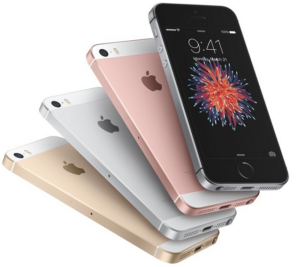In a teardown, IHS has revealed its early estimate of the production cost of Apple’s iPhone SE. The firm estimates that the handset costs about $160 to build; the entry-level US version, with 16GB of storage, has a bill of materials (BOM) of $156.20, rising to $160 when the manufacturing cost is added. The same phone retails for $400.
Andrew Rassweiler of IHS described the iPhone SE as, “an amalgamation of three iPhone generations – iPhone 5S, iPhone 6 and iPhone 6S – rolled into something altogether new… Despite its physical resemblance to the iPhone 5S, the resulting product is far superior. In fact, the only significant tradeoffs a consumer would make with the iPhone SE against the iPhone 6S is smaller size and lower screen resolution.”
According to the teardown, the SE borrows its overall design from the iPhone 5S, specifically in terms of size and display resolution. Internally, the device shares many RF components, for LTE connectivity, with the iPhone 6, as well as the same MDM9625 Qualcomm chip. The processor is Apple’s own A9 SoC with DRAM to support interactive gaming and other processor-intense uses: the same as the iPhone 6S.
As with the iPhone 5C, the iPhone SE is an attempt to bring more people into the Apple ecosystem. The phone has a lower gross margin than other iPhones, but Apple is counting on peoples’ willingness to pay more for a phone with more memory: the 64GB version brings an additional $89 in profit for Apple over the 16GB edition.
The 4″ display, with Gorilla Glass and in-cell touch, is one of the single most expensive components of the phone. However, the $20 is less than half the cost of the same display in the iPhone 5S, when that handset was originally released. This shows how Apple has improved its margins over time, and how display makers’ costs fall as processes mature.
IHS found an LG Display panel in the iPhone SE that it purchased. However, Apple also buys from Japan Display (JDI) and Sharp. On average, these are split into 40% JDI, 35% LGD and 25% Sharp. Orders were split between three vendors to ensure an ongoing supply.
Analyst Comment
From now, I will refer to the iPhone SE as ‘the Frankenphone’. (TA)

